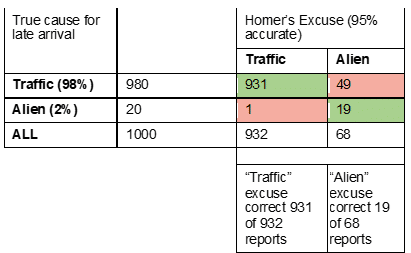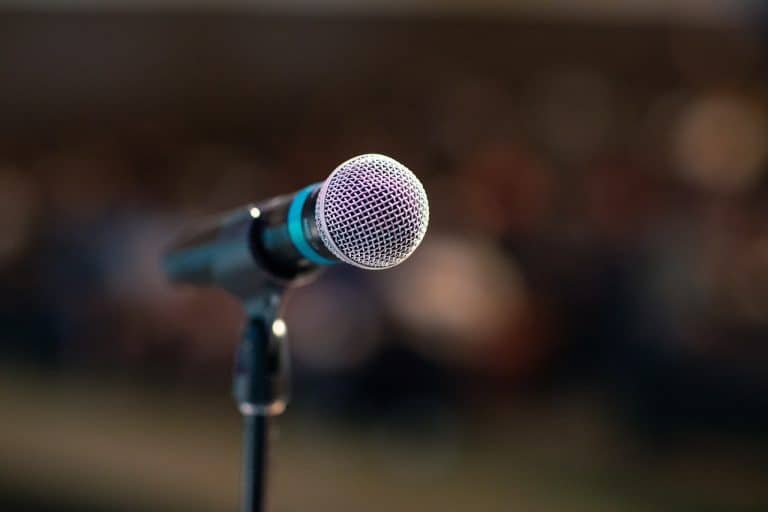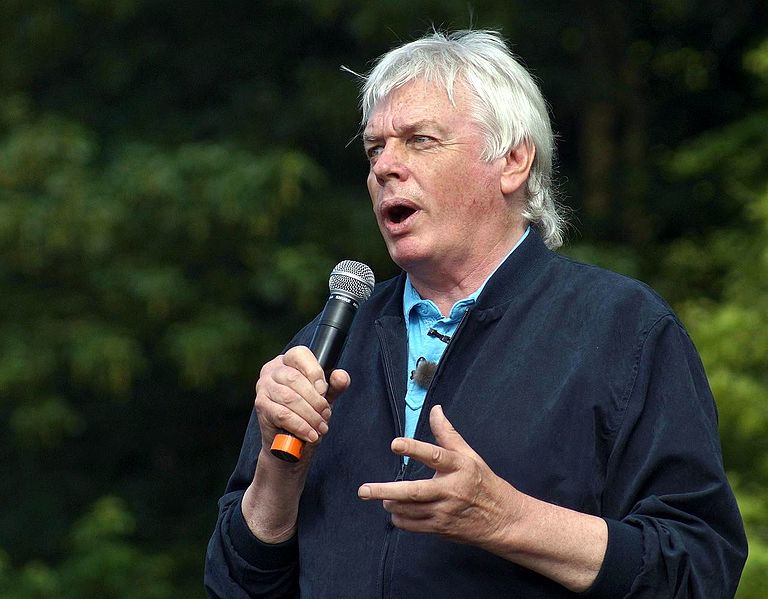‘Never wrestle with a pig. You both get dirty, and the pig gets 40,000 new followers on Twitter’.
Mehdi Hasan, ‘The Mehdi Hasan Show’, 19/06/2023
In June of 2023, the most popular podcast in the world gave an uncritical platform to one of the most prolific anti-vaccine activists in modern history, and allowed almost every outlandish, outdated and already–debunked falsehood that flew out of their mouth to go unchecked.
Robert F. Kennedy Jr’s record needs no introduction to readers of this magazine. Neither does Joe Rogan’s. Yet this particular episode marked an important milestone in cementing Rogan’s reputation as a bona fide industry leader in credulous platforming of pseudoscience. Appropriately, the debacle also threw into question the vital issue of ‘debate’ itself. Particularly the public, verbal variety.
After the podcast aired, vaccine scientist Dr Peter Hotez shared an article calling the episode ‘an orgy of unchecked vaccine misinformation’. Rogan then publicly challenged Dr Hotez to appear on his podcast, opposite RFK Jr, and contest the issues in person with Rogan as moderator. Hotez did not accept.
In the weeks that followed, pundits and specialists alike questioned whether such a venture could ever yield useful results. What is the point, they argue, of entering into such a debate when one side is so clearly committed to goalpost shifting, gish galloping, and misrepresenting their opponents? The idea that Rogan would be an impartial moderator is plainly risible. Likewise, his audience appears more entrenched than ever before, more prone to selectively edit the resulting footage, and more likely to declare victory no matter what happens.
Moreover, the idea of asking a medical health professional to debate a vexatious activist with a fringe position – as though they are equal, valid, opposing sides of an argument – is ludicrous. One has spent the last few years working on the frontline of a pandemic, when not conducting life-saving research, and the other has withered on the wild vines of Twitter, with zero professional skin in the game, having never treated a sick patient in their life.
It has been argued that even the very format of a verbal debate, such as it would stand on the Joe Rogan Experience, would mean that a conversation notionally about communicating scientific truth would inevitably descend into point scoring, linguistic jousting, and the eventual valorisation of whoever happened to bellow the loudest. After all, knowledge overconfidence is worryingly associated with anti-consensus views. At best, such an exchange would serve only as a garish spectacle in the ongoing coarsening of public health discourse.
And finally, perhaps more importantly, many brilliant scientists and well-respected pro-science advocates contend that debating RFK Jr publicly would be not only a profound waste of time and energy, but even counter-productive. Simply entering into a debate with someone considered by many to be a ‘crank’, it has been argued, creates the mirage of a live question where there isn’t one among experts, as well as the false impression that debate is alien to science to begin with. Platforming fringe views on such issues necessarily risks elevating, emboldening, and even legitimising them.
I sympathise with every single concern listed above, and believe that each of them speaks to a very real discursive malaise that the pandemic years have done a terrible job fomenting – but whose origins, of course, predate the pandemic by several decades. However, I do not believe that any of these concerns have anything to do with why it is important to debate RFK Jr. The claim that neither he nor Rogan are interested in the pursuit of truth – and that their most hardcore listeners are unlikely ever to be persuaded – is a misdiagnosis of both the problem and the solution.
This is not about convincing Rogan, RFK Jr, or even their most dyed-in-the-wool fans. This is about whether we choose to squander one of the best opportunities in living memory to reach a sizable minority of famously politically un-aligned podcast listeners in Rogan’s enormous audience by letting a rhetorically fierce vaccine expert make RFK Jr squirm on camera.
Whether we like it or not, Rogan’s podcast – notorious for its at-least-notional devotion to a detached ‘devil’s-advocate’ centrism – plays host to possibly the single largest tent of fence-sitters in the country, given that the podcast’s oversized reach happens to dwarf cable news‘. Writing off Rogan’s entire listenership as ‘unreachable’ ignores the fact that 55% of them are vaccinated, as well as relatively politically diverse overall, despite the prevalence of a few obvious trends – his listeners are often young and frequently men. Listeners praise the podcast, accurately or otherwise, for its ostensibly ‘flexible, unaligned political agenda’, and Rogan himself for his ‘curiosity’ and willingness to listen to a wide range of perspectives. While we should retain a healthy scepticism over just how open minded Joe Rogan really is, this seems to be the single most repeated reason why his listeners claim they like him.
A substantial proportion of people who occupy tentatively neutral terrain within a controversial topic can act as a wild card with the power to determine whether a particular view survives in the mainstream, or drifts into obscurity. And, unfortunately, this wild card is up for grabs by both sides. Arguing that some views ought to be beyond the pale for engagement – especially when the issues in question have already been settled by real experts – crucially abandons fence-sitters to a salivating opposition.
Such a forfeiture is made all the worse at a time of pronounced political urgency – a context often overlooked by those who argue against engaging. As political commentator Medhi Hasan argued on MSNBC:
“Why would anyone think that’s a debate worth having? What next? Neil deGrasse Tyson debates Alex Jones on astrophysics? Noam Chomsky debates Lauren Boebert on Cartesian linguistics..? Experts shouldn’t agree to debate cranks. I mean, no serious person would consider having a pre-eminent World War II historian debate a holocaust denier.”
Aside from the fact that reactionary movements against Cartesian linguistics and astrophysics have yet to be spearheaded by Lauren Boebert and Alex Jones – at least at time of writing – it is imperative to point out that a holocaust denier is not currently fronting a rising campaign to be President of the United States. Nor is one currently boasting the highest favorability ratings of any individual candidate in the race, beating both Trump and Biden in the 18-34 age group, successfully peeling away big donors from the GOP and, prior to that, polling at 20% within the Democratic Party itself.
Should the day come when a holocaust denier is the second most popular candidate in the Democratic Party behind the actual President – and who is making worrying advances as an independent in a notoriously precarious race – I certainly would hope that experts might feel it worthwhile to take notice.
Any sense of political and contextual urgency – wherein some dangerous ideas happen to be prospering more rapidly than others – is completely absent from Hasan’s argument. Further, I would argue that anti-vaccine advocacy is no less heinous than, say, pro-war apologetics – yet presumably Hasan believes that debating John Bolton was a perfectly worthwhile endeavour, despite Bolton’s predictable evasiveness. The interview was watched by roughly half a million people, and the recording remains on YouTube for posterity. In years to come, anyone sincerely curious about Bolton’s record will have no problem finding and watching it. This, as Hasan himself must realise, is a good thing.
Making a favourable impression in the minds of the uncertain is a very effective way of guaranteeing a future in which we continue to outnumber the vaccine-critical. Far from the absurd task of trying to elicit an admission of defeat from a conspiracy theorist – let alone a change of heart – this is about providing a potentially life-saving off-ramp for those caught temporarily in their tractor beam. And their gut-level suspicions are only being stoked by Hotez’s refusal to engage, and the scientific community’s notional endorsement of this refusal.
I believe that arguing against such a debate is a serious tactical misstep, and one that happens to look away from a mountain of evidence to boot. It ignores the plethora of historical cases in which a rhetorically-equipped activist stepped into ideologically unfriendly territory and succeeded. Noam Chomsky, Rutger Bregmen, Michael Brooks, Krystal Ball, Bernie Sanders, Ross Greer, Mick Lynch, Christopher Hitchens, and Marianne Williamson have all debated ‘cranks’ publicly, often on the ‘crank’s’ own platform. They did so at different times, for different causes, and with differing approaches. They each, in their own way, absolutely nailed it. And, in doing so, helped set forth a marvellous ‘how-to’ of tackling contrarians on their own turf. While such individuals may be rare, that is no reason not to find them, enlist them, and put their talents to good use.
Claims that nobody could possibly survive in such a bad-faith, hostile environment disregards the abilities of today’s many fierce, pro-vaccine advocates who literally train for situations like this every single day by debating professional anti-vaccine contrarians who are far less respectable than RFK Jr. Put simply, these activists eat Kennedys for breakfast.
Dr Peter Hotez owes nobody a debate, and based on his recent public appearances he may not be the best choice for challenging RFK Jr in such a combative context anyway. Hotez comes across as a brilliant, affable, mild-mannered specialist who has far better things to do than engage with an irksome troll on a platform for irksome trolls. The idea of forcing him to debate Kennedy – as opposed to simply enlisting any of the passionate activists above who would be delighted with the opportunity – would be like playing a game of chess by trying to force a knight to behave like a pawn.
If we adopt a big-picture view of the strategic battle against misinformation, we would do well to recognise that everyone has a part to play in the cause. Experts, activists, journalists, public speakers, educators, artists and creators all have varying skill-sets and areas of expertise. Why wouldn’t we want to use our allies by stationing them in the areas in which they can be most effective? Here, we have a legion of skilled and steadfast activists at our disposal, and we refuse to use them at our peril. Just because our task is difficult does not mean that it cannot be done well. Additionally, anybody tentatively sympathetic to Joe Rogan’s covid contrarianism is unlikely to seek out media appearances of a vaccine expert on a mainstream, corporate news channel, let alone read their book. We must meet them where they’re at. Appealing to the vast enclave of fence sitters in Rogan’s audience is too good an opportunity to squander.
The problem is not RFK Jr’s intransigence, and the solution is not trying to convince him. The problem is a coasting middle ground at risk of taking him seriously due to his rising exposure, and the solution is to firmly disabuse them of his nonsense – preferably with wit, verve, and zeal. Ultimately, as much as we may resent it, presentation matters. If we are serious about the task of reducing vaccine hesitancy – and blunting the momentum of a rising anti-vax presidential candidate before it’s too late – we must acknowledge the importance of public debate as just one of many aspects of the fight to get right. And those who bemoan its futility, funnily enough, almost always get it wrong.
Failed attempts
In and amongst the chorus of scientific Skeptics warning against debating RFK Jr, one voice stood out to me in particular. Significant, I felt, due to the direct personal experience from which they spoke. In the New York Times, Farhad Manjoo related an incident in which he engaged a notorious conspiracist publicly, and it did not go well. In this case, the conspiracist happened to be… RFK Jr himself.
Manjoo debated Kennedy on the issue of US election fraud in 2004 on public radio – an encounter Manjoo now believes was ‘a mistake’, and should serve as an example of why such endeavours are doomed by design. In doing so, whether he realises it or not, he has inadvertently provided a near-perfect, textbook model of how not to go about these kinds of confrontations.
He says:
“There’s this basic unfairness when you debate a conspiracy theorist. Your side is bound by evidence. You have to say what has been proven. You have to cite the truth. But they can just make up anything… So when it’s my turn to speak, I have to kind of get into all of the complicated reasons [why RFK Jr was wrong]… I have to say where the numbers come from… It just becomes a very droning recitation of facts, compared to [Kennedy’s] overly simplistic declaration that Republicans stole the election.”
Acknowledging that he had hoped the facts would speak for themselves, Manjoo continues:
“I had expected that the audience would clearly see that the numbers he was peddling were not correct… I don’t think that’s what happened at all.”
Manjoo concludes:
“I don’t think there’s much good that can come from debating a conspiracy theory. I think that you risk making the problem much worse… The best thing to do is kind of ignore it, because ideas that are crazy enough will just kind of go away by themselves perhaps if we don’t fan the flames.”
Incidentally, immediately after making the above statement, Manjoo mentions the fact that conspiracy theories happened to proliferate during the first Donald Trump presidency. The political phenomenon of Donald Trump, I would argue, is not a good example of a problem simply going away by ignoring it.
Curiously, Manjoo appears genuinely surprised that a spouter of nonsense would have the gall to spout nonsense during a debate. Almost as though it caught him off guard – rather like diving into a tank with a hungry shark, and then being flabbergasted that the shark had the audacity to bite you.
While reflecting on his debate appearance with RFK Jr, Manjoo seems quite unaware of the penetrating critique he gives his own performance. Having listened to the debate myself, I agree with him – it is indeed a ‘droning recitation of facts’. It could certainly do with some energy, some panache, some humour perhaps. Maybe even a creative barb or two. When dealing with a clown, I believe some licence to be colourful is afforded. When you have the facts on your side, irony, charm and a tongue-in-cheek approach can be tremendously fruitful in winning over curious listeners.
Simply scurrying around behind RFK Jr, correcting each and every little inaccuracy he makes, ensures that you’ll never break free from the confines of his vapour trail. Expecting the facts to speak for themselves does not work when dealing with someone who has forged a career out of obscuring facts. I share Manjoo’s frustration about the asymmetry of evidentiary responsibility, having written about it myself. But claiming that the venture itself is futile, simply because one’s own approach didn’t succeed, is a highly unimaginative conclusion to reach. I agree with a slightly modified version of Manjoo’s verdict; debating a conspiracy theorist may well risk making the matter worse… if you are ill-prepared or ill-equipped.
The tactics of deflection, evasion and obfuscation have been RFK Jr’s modus operandi for decades now – almost all of which is public record. These are the tricks of the trade, the tools for which he is famed. The idea that a sophist might deploy sophistry during a debate should be the very minimum we expect and, importantly, prepare for. If witnessing a professional conspiracist hurl wild, baseless claims is something that will blindside you, then you may not be ideally suited to challenging them in a public debate.
Not everybody flourishes in a debate environment. It is certainly not incumbent on specialists in a given field to develop such a skill. And such an enterprise is definitely not the be-all and end-all of combating misinformation. I argue simply that we should allow our experts and activists to each play to their strengths. Because when rhetorically equipped activists step into the fray, they can be astonishingly effective.
Successful attempts
Some have voiced reasonable misgivings along the lines of biased editing – how can we trust that any debate footage will be used and edited fairly? However, when the historian and author Rutger Bregmen appeared on Fox News with Tucker Carlson, he devised and executed an ingenious way around this issue with astounding results.
The interview was civil to begin with, but quickly went off the rails. After challenging Carlson pointedly on his own hypocrisy in discussing elite tax avoidance, something that Carlson clearly had not anticipated, Bregman prompted the following outburst from his host:
“… I just wanna say to you why don’t you go fuck yourself, you tiny brain – I hope this get’s picked up because you’re a moron!”
Bregman handled the incident with humour, nerve and aplomb, responding to Carlson’s tantrum with a wry smile:
“You can’t handle the criticism, can you?”
After the incident, Fox News informed Bregman that the segment would not air at all. However, unbeknownst to them, Bregman had secretly recorded the exchange in its entirety, apparently having anticipated this turn of events. Once it became clear that his appearance would not see the light of day, Bregman leaked it himself. It remains on YouTube with several million views, and even the comments on Fox News’s own subsequent video attempting to explain Carlson’s actions are generally not favourable to the host. It was an audacious stunt that successfully brought the issue of elite tax avoidance hypocrisy to the mass attention of Fox News viewers – some of whom may well have questioned their favourite politico’s motives as a result.
In addition to his pitch-perfect composure in the face of Carlson’s meltdown, Bregman’s example shows us that when it comes to circumventing the biased hand of an editor, we have permission to be creative. Bringing along a confidant to covertly record the exchange allowed Bregman to make two things plainly visible to Fox News viewers – their favourite host attempted to hide something from them, and when accused of being ‘a millionaire funded by billionaires’, he seemed suspiciously rattled. Whyever could this be…?
The combination of a forceful, substantive challenge with a teasing style can go a long way.
In a TV segment that was broadcast on Good Morning Britain in early 2019, contrarian pundit Piers Morgan gave the radical MP Ross Greer a very unflattering introduction. Greer had recently labelled Winston Churchill a ‘white supremacist mass murderer’ in a tweet. After Morgan taunted him for ‘applauding [his] own genius’ on Twitter, he asked Greer to begin the interview by explaining himself.
The 60 seconds that followed are an absolute masterclass in how to flourish while facing a hostile interlocutor:
“Absolutely… Piers, you’re a sensitive soul; yesterday you accused me of being a racist for pointing out that you look like honey-glazed gammon. If you want an example of real racism, you just have to look to Churchill – he talked about his belief in the “triumph of the Aryan race’. He hated Indians with a passion – he said they were “a beastly people with a beastly religion”. When a famine broke out three million people starved to death… He used poison gas against Kurds, against Afghans. He was a strong supporter of Britain’s concentration camps in the Boer War where 28,000 people died. He’s always advocated the use of… “terror” bombing campaigns. His own cabinet had to stop him… from bombing protesters in Ireland.”
Greer manages to give an opening statement that includes a surfeit of accurate historical events, direct quotations from the political figures involved, as well as a joke – albeit a churlish one – at the expense of the host who antagonised him. He speaks briskly and clearly, as though he is aware he is dealing with a host who might try to interrupt him. When Morgan later attempts to imply that Churchill single-handedly won the Second World War ‘through the power of his rhetoric’, Greer visibly laughs. Outraged, Morgan immediately attempts to chide him for laughing, allowing Greer the opportunity to succinctly dispute the preceding analysis again.
The incident made national news, with many outlets placing particular focus on Morgan’s lack of composure. The incident remains on YouTube having garnered millions of views, and comments were generally favourable to Greer. Passing viewers of the morning news who may well have been unfamiliar with Churchill’s broader record – owing to a near-unanimous idolisation by mainstream press – were given a pocket-sized precis of the former Prime Minister’s murkier side.
Were we to glean any lessons from Greer’s performance, I think they would be:
- Come prepared.
- Speak briskly and push through interruptions.
- Don’t be afraid to laugh if something is ridiculous.
Although not debating a ‘crank’ as such, similar tactics were deployed quite effectively by Mick Lynch during the UK rail strikes in the summer of 2023. Anyone considering debating RFK Jr might do well to remember that judiciously executed mockery can be lethally effective.
A more recent example that showcases the efficacy of ridicule and sarcasm to an even greater extent occurred when Bassem Youssef appeared on Piers Morgan Uncensored. Although Youssef is indeed a professional satirist, it is valuable to notice how such an approach seems to lend its user a stylistic upper hand in an otherwise precarious environment – the polar opposite of Manjoo’s approach in the aforementioned debate with RFK Jr. One way to let an audience know that an opponent is laughable is to invite an audience to laugh at them.
While adopting a bold, assertive approach certainly can be beneficial, quiet charm and affability can persuade quite powerfully too. Dave Rubin likely did not expect much from Marianne Williamson when he invited her to appear on his show, given her idiosyncratic presence in the political landscape of the US at the time. Over the course of an hour-long interview, their conversation covered mass incarceration, reparations, slavery, open-borders, and myriad culture-war moral panics that constitute the currency of Rubin’s entire brand. Their exchange can be summarised by a single line, delivered gently by Williamson:
“Dave… Have you read up much on slavery?”
Williamson’s tone never deviates from that of a patient school-teacher, gainfully tasked with the thankless duty of educating an errant student. In discussing the case for reparations in the US, she calmly and repeatedly clarifies the difference between Rubin’s tired, specious notion of ‘collective guilt’ and that of ‘taking responsibility’:
“This is not about guilt. There is a difference… If you have a company that takes over another company – you inherit their assets and you inherit their debts”.
The analogies she uses are clear, easy to understand, and delivered elegantly – in stark contrast to Farhad Manjoo’s efforts against RFK Jr in 2006. Despite Rubin’s almost admirable persistence in misunderstanding what she is talking about, she never relents her poise and her lucid exposition. The comments section of the interview yields some interesting results:
- ‘i was skeptical [sic] at first, but her depth of knowledge and ease of conversation really changed my mind about her.’ – @joe42m13
- ‘Not gonna lie, this was a lecture for me too. Never thought Marianne Williamson would explain things so plainly and so eloquently. Good stuff’ – @alexg2890
- ‘Marianne is more impressive than I gave her credit for’ – @MissySqrrr
- ‘Lmao even Dave’s own audience is dunking on him in the comments section’ – @RaitoYagami88
Lest we forget, these are comments on a video posted by a channel criticised by experts for platforming race and IQ quackery. The sheer fact that Williamson was able to give a basic US history lesson to the viewership of the Rubin Report – and for viewers to actually warm to her – is a remarkable achievement. Charm and personability, it seems, can make quite a durable Trojan horse. We can’t know for sure, but I suspect Williamson understood perfectly the environment she was walking into, and the task at hand. Convincing Rubin was never on the cards. Slowly peeling away some of his viewership was the name of the game.
Williamson herself, it should be said, has an unfortunate history of veering dangerously close to entertaining anti-vaccine narratives, despite committing to funding vaccination programmes fully via a universal healthcare program – one of only a few candidates to do so. Just as we are free to evaluate her to-ing and fro-ing on vaccine messaging, we are similarly at liberty to mine her rhetorical tactics for utility. Vaccine vacillating notwithstanding, she nailed the exchange above.
Audience response can be instructive. One ex-Jordan Peterson fan wrote of how watching the Canadian celebrity psychologist debate the Slovenian philosopher Slavoj Žižek led to his impression of Peterson ‘crumbling’. Witnessing how ill-prepared Peterson was for the debate was not lost on other audience members too:
- ‘Jordan Peterson’s opening is a first year uni essay done the night before’ – @WanderingSTar5270 (1.4k likes)
- ‘imagine reading the communist manifesto once and thinking you can take on a post-marxist philosohper [sic] in a debate’ – @jasonkazazis (1.5k likes)
Although this particular debate is mercilessly long and both parties could be said to boast a reputation of sophistry of varying kinds, Žižek plainly disassembles a number of Peterson’s contradictions in a way that resonated with viewers. Peterson’s debate with Matt Dillahunty yielded similar results, having usefully provoked Peterson into admitting that he does not believe that art would exist without belief in God – a claim wild enough to give even Peterson fans pause for thought.
Noam Chomsky famously debated William F. Buckley Jr on his own turf in 1969, during the US invasion of Vietnam, for an episode of Firing Line. Chomsky confidently and persistently challenged his opponent on the wider contextual motivations for US imperial interests abroad, conspicuously highlighting Buckley’s own gaps in historical knowledge. Buckley’s frequent interruptions and shifting of goalposts earned him the title of ‘professional subject changer’. Years later, Chomsky recalled that:
“At the end, he [Buckley] was pretty angry. He said he would invite me back but, of course, I never heard from him again.”
Chomsky’s dogged insistence on factual truth and unflagging perseverance in drawing attention to historical inaccuracies is a valuable precedent. It is echoed in Krystal Ball’s appearance on Real Time with Bill Maher, Michael Brook’s appearances on i24, and James O’Brien’s cross-examination of Nigel Farage on LBC.
Additionally, Chomsky attempts novelly to resist the framing of the debate as ‘two equally valid opposing sides’ by disclosing at the outset:
“There are certain issues… such that by consenting to discuss them, one degrades oneself and to some degree loses one’s humanity”.
Readers familiar with Chomsky’s style will note the acerbic humour of beginning an exchange by saying ‘before we go on, this conversation is a fundamental affront to my humanity’. However, I think it is possible to imagine appropriating this tactic against RFK Jr by beginning any debate with a similar verbal frontispiece; ‘Just so we’re clear, for anybody who happens to be listening, this entire conversation is a circus’. As we have seen, audiences appreciate candour and humour. Such devices fare well in conversations at risk of becoming a ‘droning recitation of facts’.
Admittedly, the examples I have given thus far have all involved either an impartial moderator, or taken the form of a televised interview. However, I believe it is still possible to do well in far more dire circumstances – when your opponent, your moderator, and even a majority of the audience are flatly opposed to you.
In April 2019, Bernie Sanders appeared at a town hall event organised and hosted by Fox News – the first time a Democratic presidential candidate appeared for such an event on the network. The event was chaired by not one but two Fox News hosts, who were asking and fielding questions. The segment was broadcast to 2.6 million Fox News viewers around the country, and Sanders’ stated aim was to bring the issue of universal healthcare to an audience notionally opposed to him.
Only one month prior to this, the DNC declined an invitation from Fox News to moderate a debate amid concerns the network would not be ‘fair and neutral’. It is difficult to imagine a finer example of being outnumbered in enemy territory.
By all accounts, Sanders triumphed. Despite appearing on a network virtually synonymous with contemporary political casuistry, Sanders managed even to earn applause breaks when discussing single-payer healthcare, immigration and climate change. A strong message delivered simply and robustly can make a startling impression, even when the very structure of the format you are operating within appears dead set against you.
Similarly, in the year 2000, Christopher Hitchens debated the President of the Catholic League Bill Donohue at the Union League Club in New York City. The debate predated the cultural phenomenon of ‘New Atheism’ by a number of years, thus rendering Hitchens bereft of the legion of admirers he would soon acquire. The event was sponsored by a Roman Catholic organisation. Hitchens’ opponent was a Roman Catholic layman. The moderator of the debate was a Roman Catholic priest. Hitchens was given measurably less time to speak than his opponent – as well as being frequently cut off by the moderator – and the audience were largely unsympathetic to his side of the aisle. At one point, when Hitchens suggested that homosexuality is an entirely valid form of human love, the room audibly jeered.
Despite every odd being overwhelmingly stacked against him, Hitchens managed to put his case forward dynamically and unequivocally, as well as calling out in no uncertain terms the stark homophobia proudly on display in the room. By the end of the event, Hitchens was earning a small smattering of increasingly spirited applause. However, even if every single audience member was left somehow unmoved by his efforts, the act of committing to record a clear and damning challenge of the Catholic Right’s positions is valuable, and guards against possible future efforts to backtrack as the institution succumbs to the rising tide of social progress. The debate has enjoyed more than a decade on YouTube, and Donohue’s stale pronouncements on evolution, homosexuality and AIDS are at the mercy of history.
While much can be said about Hitchen’s broader political activism, his economy of language within a debate format is particularly useful to appraise critically. His deft balance of humour, rhetorical skill and unflinching nerve makes him ideally predisposed to these kinds of public confrontations. Similar tools should be utilised against RFK Jr advisedly.
Let us turn now to examples both recent and germane to the field in question; to pro-science advocates successfully challenging anti-vax campaigners in a public setting. I believe that each of the following activists would flourish while debating RFK Jr and would likely be delighted with the opportunity to do so. Crucially, they each manage to integrate a bold, disputatious style with the ability to be ruthlessly evidence-based and entertaining to a wider audience.
On the 31st of January, geneticist Dr Ian Copeland publicly debated Steve Kirsch, an anti-vax campaigner that even Alex Berenson manages to find fault with. To the uninitiated, Kirsch’s exploits, stunts and low standards of evidence make RFK Jr look almost respectable. The debate took place online, in the setting of a ‘Twitter Space’ – a medium that facilitates live audio conversations. Spaces carries the advantage of being able to support your arguments instantly by posting links to research for listeners to review in real time.
Thanks to Dr Copeland’s spirited, combative style, and his unrelenting insistence that his opponent support his arguments immediately with adequate evidence, Kirsch floundered in the debate. Upon Kirsch’s claim to have personally accrued a data set that purported to demonstrate vaccine-related harms, Dr Copeland asked him to provide a p-value for his statistics, so as to affirm any statistical significance. Not only had Kirsch not calculated one, he did not appear to know how to do so in the first place. Dr Copeland exposed Kirsch so thoroughly, aided by similarly robust contributions from “The Veg Doc”, and scientist and activist Aysha Mirza MBS – rhetorically gifted in their own rights – that Kirsch lost his composure entirely around the 1:22:50 mark.
Kirsch is no stranger to humiliating debate appearances, having endured a similar experience on the 1st of June 2023. A scientist and activist named Cat Morgan debated the question ‘do vaccines cause autism’ with Kirsch, who had suddenly become enamoured with the topic. Morgan did tremendously well. When listening to the debate, it became clear within the first 30 minutes that Kirsch did not even know what autism was. Kirsch said:
“These children reacted very badly to the measles vaccine… Whether you want to call that autism or not call that autism, I don’t care…”
If we needed further confirmation that Kirsch speaks with great confidence on issues he knows almost nothing about, this debate provided it. Despite being quite outnumbered, Morgan aptly and deftly untangled every tired, Wakefield-adjacent trope that came from Kirsch and his acolytes, all while offering clear and compelling explanations for the phenomena they were attempting to flag. Morgan’s ability to keep her cool in the face of Kirsch’s tone-deaf pronouncements on autism was unimpeachable. As well as being a compassionate expert on the granular details of the vaccine-autism non-link, Morgan herself happens to be autistic. Soon after the debate, Kirsch blocked Morgan.
A pro-vaccine activist who goes by the cunningly deceptive handle The Real Truther (TRT) has demonstrated similar prowess in exposing anti-vaccine chicanery, having debated Ed Dowd on Dr Drew’s show. Dr Drew can hardly be considered an impartial moderator and TRT was given very little time to make his case. Yet TRT effectively and directly challenged Dowd to explain Sweden’s historic negative excess deaths in 2021, 2022, and 2023 despite boasting a significantly higher vaccine uptake than the US, and with less confounding variables such as gun violence. Dowd responded by claiming that excess deaths were in fact going up for 2023, which TRT disputed immediately.
TRT has an enviable talent for squeezing research-laden yet entertaining rebuttals into almost no time at all – a skill that made him a suggested candidate to take Peter Hotez’s place in a debate against RFK Jr on The Joe Rogan Experience. I believe this would be a phenomenally wise idea. Our undertaking is not to convert Kennedy’s most extreme followers, but rather to peel away enough fence-sitters so as to demobilise his outreach and blunt his effect. It creates a public record of trickery being dismantled in real time – available to view permanently to future generations of curious people.
Insisting that facts ought to speak for themselves is having absolutely no effect on RFK Jr’s polling numbers. Nor is it doing anything to reach the vaccine-hesitant. Concerns about potentially ‘elevating’ dangerous views are rendered moot by the fact that those very views have already enjoyed uncritical airtime on the world’s largest podcast. Spending precious hours bemoaning the cheapening of public discourse is a luxury we cannot afford when a worryingly popular anti-vax contender is challenging an incumbent with favourability ratings at a record low. Decrying public debate as a crass, boorish pursuit simply allows our opponents more scope to appeal to fence-sitters and more time to build momentum unimpeded.
Every second we spend arguing against ‘fanning the flames’ could be better spent by going about the business of putting out the fire. We must keep Kennedy where he belongs: firmly at the fringe. Debates, done well, can change minds. RFK Jr must be challenged by a formidable vaccine expert. Forcefully. Publicly. Now.

















